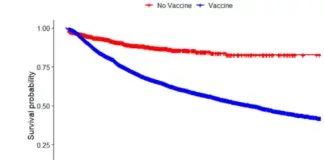
Calcium deficiency is a common nutritional concern, but how many folks consider the vital importance of magnesium in human health and disease?
New research published in the journal BMC Bioinformatics indicates that magnesium’s role in human health and disease is far more significant and complicated than previously imagined.
While it is well known that all living things require magnesium, and that it is found in over 300 enzymes in the human body, including those enzymes utilizing or synthesizing ATP (the molecular unit of currency for energy transfer), the new studied titled, “3,751 magnesium binding sites have been detected on human proteins,” indicates that a deficiency of magnesium may profoundly affect a far wider range of biological structures than previously understood.[i]
The proteome, or entire set of proteins expressed by the human genome, contains well over 100,000 distinct protein structures, despite the fact that there are believed to be only 20,300 protein-coding genes in the human genome.
The discovery of the “magneseome,” as its being called, adds additional complexity to the picture, indicating that the presence or absence of adequate levels of this basic mineral may epigenetically alter the expression and behavior of the proteins in our body, thereby altering the course of both health and disease.
Indeed, modern medicine and nutrition fixates primarily on calcium deficiency (due, in part, to the WHO’s highly unscientific definition of osteoporosis), even in the face of accumulating peer-reviewed research indicating that excess calcium consumption can greatly increase cardiac morbidity and mortality.
Magnesium Research
Research relevant to magnesium has been accumulating for the past 40 years at a steady rate of approximately 2,000 new studies a year. Our database project has indexed well over 100 health benefits of magnesium thus far. For the sake of brevity, we will address seven key therapeutic applications for magnesium as follows:
- Fibromyalgia: Not only is magnesium deficiency common in those diagnosed with fibromyalgia, [ii] [iii] but relatively low doses of magnesium (50 mg), combined with malic acid in the form of magnesium malate, has been clinically demonstrated to improve pain and tenderness in those to which it was administered.[iv]
- Atrial Fibrillation: A number of studies now exist showing that magnesium supplementation reduce atrial fibrillation, either by itself, or in combination with conventional drug agents.[v]
- Diabetes, Type 2: Magnesium deficiency is common in type 2 diabetics, at an incidence of 13.5 to 47.7% according to a 2007 study.[vi] Research has also shown that type 2 diabetics with peripheral neuropathy and coronary artery disease have lower intracellular magnesium levels.[vii] Oral magnesium supplementation has been shown to reduce plasma fasting glucose and raising HDL cholesterol in patients with type 2 diabetes.[viii] It has also been shown to improve insulin sensitivity and metabolic control in type 2 diabetic subjects.[ix]
- Premenstrual Syndrome: Magnesium deficiency has been observed in women affected by premenstrual syndrome.[x] It is no surprise therefore that it has been found to alleviate premenstrual symptoms of fluid retention,[xi] as well as broadly reducing associated symptoms by approximately 34% in women, aged 18-45, given 250 mg tablets for a 3-month observational period.[xii] When combined with B6, magnesium supplementation has been found to improve anxiety-related premenstrual symptoms.[xiii]
- Cardiovascular Disease and Mortality: Low serum magnesium concentrations predict cardiovascular and all-cause mortality.[xiv] There are a wide range of ways that magnesium may confer its protective effects. It may act like a calcium channel blocker,[xv] it is hypotensive,[xvi] it is antispasmodic (which may protect against coronary artery spasm),[xvii] and anti-thrombotic.[xviii] Also, the heart muscle cells are exceedingly dense in mitochondria (as high as 100 times more per cell than skeletal muscle), the “powerhouses” of the cell,” which require adequate magnesium to produce ATP via the citric acid cycle.
- Migraine Disorders: Blood magnesium levels have been found to be significantly lower in those who suffer from migraine attacks.[xix] [xx] A recent Journal of Neural Transmission article titled, “Why all migraine patients should be treated with magnesium,” pointed out that routine blood tests do not accurately convey the true body magnesium stores since less than 2% is in the measurable, extracellular space, “67% is in the bone and 31% is located intracellularly.”[xxi] The authors argued that since “routine blood tests are not indicative of magnesium status, empiric treatment with at least oral magnesium is warranted in all migraine sufferers.” Indeed, oral magnesium supplementation has been found to reduce the number of headache days in children experiencing frequent migranous headaches, [xxii] and when combined with l-carnitine, is effective at reducing migraine frequency in adults, as well.[xxiii]
- Aging: While natural aging is a healthy process, accelerated aging has been noted to be a feature of magnesium deficiency,[xxiv] especially evident in the context of long space-flight missions where low magnesium levels are associated with cardiovascular aging over 10 times faster than occurs on earth.[xxv] Magnesium supplementation has been shown to reverse age-related neuroendocrine and sleep EEG changes in humans.[xxvi] One of the possible mechanisms behind magnesium deficiency associated aging is that magnesium is needed to stabilize DNA and promotes DNA replication. It is also involved in healing up of the ends of the chromosomes after they are divided in mitosis.[xxvii]
Best Sources of Magnesium In The Diet
The best source of magnesium is from food, and one way to identify magnesium-containing foods are those which are green, i.e. chlorophyll rich. Chlorophyll, which enable plants to capture solar energy and convert it into metabolic energy, has a magnesium atom at its center. Without magnesium, in fact, plants could not utilize the sun’s light energy.
Magnesium, however, in its elemental form is colorless, and many foods that are not green contain it as well. The point is that when found complexed with food cofactors, it is absorbed and utilized more efficiently than in its elemental form, say, extracted from limestone in the form of magnesium oxide.
The following foods contain exceptionally high amounts of magnesium. The portions described are 100 grams, or a little over three ounces.
- Rice bran, crude (781 mg)
- Seaweed, agar, dried (770 mg)
- Chives, freeze-dried (640 mg)
- Spice, coriander leaf, dried (694 mg)
- Seeds, pumpkin, dried (535 mg)
- Cocoa, dry powder, unsweetened (499 mg)
- Spices, basil, dried (422 mg)
- Seeds, flaxseed (392 mg)
- Spices, cumin seed (366 mg)
- Nuts, brazilnuts, dried (376 mg)
- Parsley, freeze-dried (372 mg)
- Seeds, sesame meal (346 mg)
- Nut, almond butter (303 mg)
- Nuts, cashew nuts, roasted (273 mg)
- Soy flour, defatted (290 mg)
- Whey, sweet, dried (176 mg)
- Bananas, dehydrated (108 mg)
- Millet, puffed (106 mg)
- Shallots, freeze-dried (104 mg)
- Leeks, freeze-dried (156 mg)
- Fish, salmon, raw (95 mg)
- Onions, dehydrated flakes (92 mg)
- Kale, scotch, raw (88 mg)
Fortunately, for those who need higher doses, or are not inclined to consume magnesium rich foods, there are supplemental forms commonly available on the market. Keep in mind, for those who wish to take advantage of the side benefit of magnesium therapy, namely, its stool softening and laxative properties, magnesium citrate or oxide will provide this additional feature.
For those looking to maximize absorption and bioavailability magnesium glycinate is ideal, as glycine is the smallest amino acid commonly found chelated to magnesium, and therefore highly absorbable.
Resources
- [i] Damiano Piovesan, Giuseppe Profiti, Pier Luigi Martelli, Rita Casadio. 3,751 magnesium binding sites have been detected on human proteins. BMC Bioinformatics. 2012 ;13 Suppl 14:S10. Epub 2012 Sep 7. PMID: 23095498
- [ii] G Moorkens, B Manuel y Keenoy, J Vertommen, S Meludu, M Noe, I De Leeuw. Magnesium deficit in a sample of the Belgian population presenting with chronic fatigue. Magnes Res. 1997 Dec;10(4):329-37. PMID: 9513929
- [iii] J Eisinger, A Plantamura, P A Marie, T Ayavou. Selenium and magnesium status in fibromyalgia. Magnes Res. 1994 Dec;7(3-4):285-8. PMID: 7786692
- [iv] I J Russell, J E Michalek, J D Flechas, G E Abraham. Treatment of fibromyalgia syndrome with Super Malic: a randomized, double blind, placebo controlled, crossover pilot study. J Rheumatol. 1995 May;22(5):953-8. PMID: 8587088
- [v] GreenMedInfo.com, Atrial Fibrillation and Magnesium (5 studies)
- [vi] Phuong-Chi T Pham, Phuong-Mai T Pham, Son V Pham, Jeffrey M Miller, Phuong-Thu T Pham . Hypomagnesemia in patients with type 2 diabetes. Clin J Am Soc Nephrol. 2007 Mar;2(2):366-73. Epub 2007 Jan 3. PMID: 17699436
- [vii] M de Lordes Lima, T Cruz, J C Pousada, L E Rodrigues, K Barbosa, V Canguçu. The effect of magnesium supplementation in increasing doses on the control of type 2 diabetes. Diabetes Care. 1998 May;21(5):682-6. PMID: 9589224
- [viii] Y Song, K He, E B Levitan, J E Manson, S Liu. Effects of oral magnesium supplementation on glycaemic control in Type 2 diabetes: a meta-analysis of randomized double-blind controlled trials. Cardiovasc Toxicol. 2008;8(3):115-25. Epub 2008 Jul 8. PMID: 16978367
- [ix] Martha Rodríguez-Morán, Fernando Guerrero-Romero. Oral magnesium supplementation improves insulin sensitivity and metabolic control in type 2 diabetic subjects: a randomized double-blind controlled trial. Diabetes Care. 2003 Apr;26(4):1147-52. PMID: 12663588
- [x] F Facchinetti, P Borella, G Sances, L Fioroni, R E Nappi, A R Genazzani. Oral magnesium successfully relieves premenstrual mood changes. Obstet Gynecol. 1991 Aug;78(2):177-81. PMID: 2067759
- [xi] A F Walker, M C De Souza, M F Vickers, S Abeyasekera, M L Collins, L A Trinca. Magnesium supplementation alleviates premenstrual symptoms of fluid retention. J Womens Health. 1998 Nov;7(9):1157-65. PMID: 9861593
- [xii] S Quaranta, M A Buscaglia, M G Meroni, E Colombo, S Cella. Pilot study of the efficacy and safety of a modified-release magnesium 250 mg tablet (Sincromag) for the treatment of premenstrual syndrome. Am J Gastroenterol. 2008 Dec;103(12):2972-6. PMID: 17177579
- [xiii] M C De Souza, A F Walker, P A Robinson, K Bolland. A synergistic effect of a daily supplement for 1 month of 200 mg magnesium plus 50 mg vitamin B6 for the relief of anxiety-related premenstrual symptoms: a randomized, double-blind, crossover study. J Womens Health Gend Based Med. 2000 Mar;9(2):131-9. PMID: 10746516
- [xiv] Thorsten Reffelmann, Till Ittermann, Marcus Dörr, Henry Völzke, Markus Reinthaler, Astrid Petersmann, Stephan B Felix. Low serum magnesium concentrations predict cardiovascular and all-cause mortality. Atherosclerosis. 2011 Jun 12. Epub 2011 Jun 12. PMID: 21703623
- [xv] Andrea Rosanoff, Mildred S Seelig. Comparison of mechanism and functional effects of magnesium and statin pharmaceuticals. J Am Coll Nutr. 2004 Oct;23(5):501S-505S. PMID: 15466951
- [xvi] GreenMedInfo.com, Magnesium’s Hypotensive Properties.
- [xvii] GreenMedInfo.com, Magnesium’s Antispasmodic Properties.
- [xviii] Joen R Sheu, George Hsiao, Ming Y Shen, Yen M Lee, Mao H Yen . Antithrombotic effects of magnesium sulfate in in vivo experiments. Int J Hematol. 2003 May;77(4):414-9. PMID: 12774935
- [xix] Afshin Samaie, Nabiollah Asghari, Raheb Ghorbani, Jafar Arda. Blood Magnesium levels in migraineurs within and between the headache attacks: a case control study. Pan Afr Med J. 2012 ;11:46. Epub 2012 Mar 15. PMID: 22593782
- [xx] Mahnaz Talebi, Dariush Savadi-Oskouei, Mehdi Farhoudi, Solmaz Mohammadzade, Seyyedjamal Ghaemmaghamihezaveh, Akbar Hasani, Amir Hamdi. Relation between serum magnesium level and migraine attacks. Neurosciences (Riyadh). 2011 Oct ;16(4):320-3. PMID: 21983373
- [xxi] Alexander Mauskop, Jasmine Varughese. Why all migraine patients should be treated with magnesium. J Neural Transm. 2012 May ;119(5):575-9. Epub 2012 Mar 18. PMID: 22426836
- [xxii] Fong Wang, Stephen K Van Den Eeden, Lynn M Ackerson, Susan E Salk, Robyn H Reince, Ronald J Elin. Oral magnesium oxide prophylaxis of frequent migrainous headache in children: a randomized, double-blind, placebo-controlled trial. Eur J Endocrinol. 2009 Apr;160(4):611-7. Epub 2009 Jan 29. PMID: 12786918
- [xxiii] Ali Tarighat Esfanjani, Reza Mahdavi, Mehrangiz Ebrahimi Mameghani, Mahnaz Talebi, Zeinab Nikniaz, Abdolrasool Safaiyan. The effects of magnesium, L-carnitine, and concurrent magnesium-L-carnitine supplementation in migraine prophylaxis. Biol Trace Elem Res. 2012 Dec ;150(1-3):42-8. Epub 2012 Aug 17. PMID: 22895810
- [xxiv] David W Killilea, Jeanette A M Maier. A connection between magnesium deficiency and aging: new insights from cellular studies. Magnes Res. 2008 Jun;21(2):77-82. PMID: 18705534
- [xxv] GreenMedInfo.com, What We Learned From The Accelerated Aging of Astronauts
- [xxvi] Katja Held, I A Antonijevic, H Künzel, M Uhr, T C Wetter, I C Golly, A Steiger, H Murck. Oral Mg(2+) supplementation reverses age-related neuroendocrine and sleep EEG changes in humans. Pharmacopsychiatry. 2002 Jul;35(4):135-43. PMID: 12163983
- [xxvii] William J Rowe. Correcting magnesium deficiencies may prolong life. Clin Interv Aging. 2012 ;7:51-4. Epub 2012 Feb 16. PMID: 22379366
Disclaimer: We at Prepare for Change (PFC) bring you information that is not offered by the mainstream news, and therefore may seem controversial. The opinions, views, statements, and/or information we present are not necessarily promoted, endorsed, espoused, or agreed to by Prepare for Change, its leadership Council, members, those who work with PFC, or those who read its content. However, they are hopefully provocative. Please use discernment! Use logical thinking, your own intuition and your own connection with Source, Spirit and Natural Laws to help you determine what is true and what is not. By sharing information and seeding dialogue, it is our goal to raise consciousness and awareness of higher truths to free us from enslavement of the matrix in this material realm.
 EN
EN FR
FR



























The purest form is MgCl !
Great article! Anyone interested in this stuff should definitely check out the book Everyday Roots. It teaches you how to replace all the toxic chemicals in your life with healthy organic alternatives. Its completely changed my life and how I feel everyday! 🙂
Heres a great review of everday roots: http://reggiesreview.weebly.com/everyday-roots-review.html
Keep up the great content!